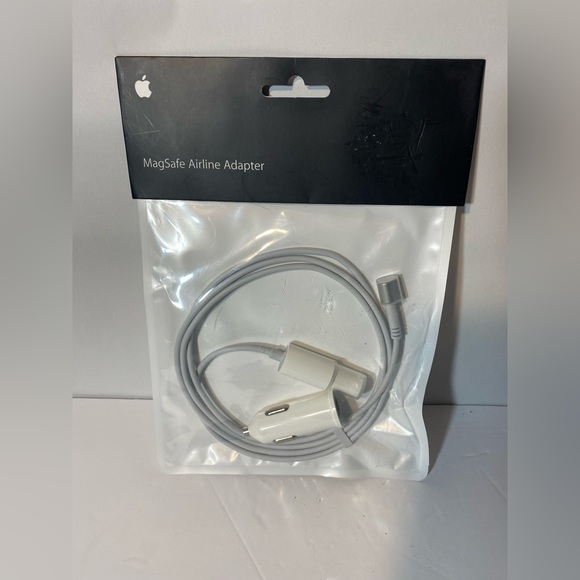I’m just curious how others have looked into this. Apple used to have its proprietary MagSafe power adapters that came in multiple output levels. The ones I’ve had were rated at 60W but the list price was the same for the 85W version, which some recommended since they were all compatible and with the rationale that it should run cooler and last longer. They also had this special version for use with an obscure power port found on some passenger airlines, but where they said it would only provide power for active use but wouldn’t charge the battery.
With USB-C, there’s a lot of flexibility. Almost too much. Some computers can deal with 5W. Others just don’t accept it at all. I know with one Lenovo laptop in my house there’s a warning. It came with a 65W power adapter that no longer works. It seems that under 45W is where there’s a message at power on in that it’s a lower power than recommended and requires a button press to continue. But 30W seems to be adequate, although it might charge slower if the battery is drained. We typically have it plugged in nearly all the time.
I’ve taken to using a USB-C power pack with an 18W rated output to at least slow down the draining of the battery.
My wife lost the rather expensive higher powered Apple OEM power adapter and cable on her Mac and just replaced it with something cheap - maybe 45W. But it’s been working fine. I occasionally use a 45W Anker power adapter on a Mac that came with a 67W USB-C power adapter and that hasn’t created any issues so far.
More recently I’ve been using a Chromebook away from home to stream video to a TV. I typically keep the 45W USB-C power adapter that came in the box, at home. So I’ve tried a variety of power adapters like a 30W Apple or a 20W generic one (label says made by Rewoda) and the status says something about the power being unreliable, although (if the battery is under 100%) it usually will still charge up to 100% while being used. I did try using the USB-C port from my Anker 321 cube power adapter and surge protector. It says it’s rated at 20W for USB-C, but the other night it was slowly dropping charge level even though it indicated that it was connected to power. I switched to the separate 20W adapter and it started charging the battery again.
With USB-C, there’s a lot of flexibility. Almost too much. Some computers can deal with 5W. Others just don’t accept it at all. I know with one Lenovo laptop in my house there’s a warning. It came with a 65W power adapter that no longer works. It seems that under 45W is where there’s a message at power on in that it’s a lower power than recommended and requires a button press to continue. But 30W seems to be adequate, although it might charge slower if the battery is drained. We typically have it plugged in nearly all the time.
I’ve taken to using a USB-C power pack with an 18W rated output to at least slow down the draining of the battery.
My wife lost the rather expensive higher powered Apple OEM power adapter and cable on her Mac and just replaced it with something cheap - maybe 45W. But it’s been working fine. I occasionally use a 45W Anker power adapter on a Mac that came with a 67W USB-C power adapter and that hasn’t created any issues so far.
More recently I’ve been using a Chromebook away from home to stream video to a TV. I typically keep the 45W USB-C power adapter that came in the box, at home. So I’ve tried a variety of power adapters like a 30W Apple or a 20W generic one (label says made by Rewoda) and the status says something about the power being unreliable, although (if the battery is under 100%) it usually will still charge up to 100% while being used. I did try using the USB-C port from my Anker 321 cube power adapter and surge protector. It says it’s rated at 20W for USB-C, but the other night it was slowly dropping charge level even though it indicated that it was connected to power. I switched to the separate 20W adapter and it started charging the battery again.

